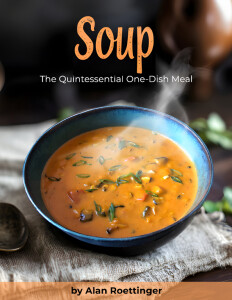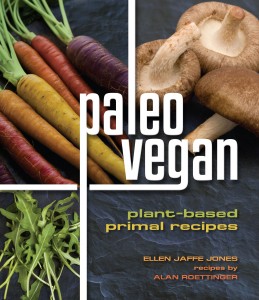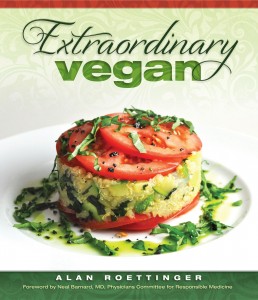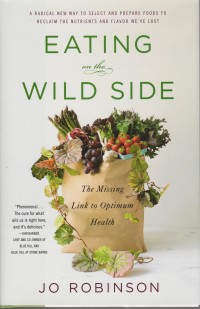Some may recall a post I put up back in March, called “Bitter Is Good,” in which I discussed the health benefits of bitter foods, and our natural tendency to choose sweet over bitter–even if it costs us in terms of health. A point I may not have made–although I hinted at it–is that there are always elements of all tastes in anything natural that we eat.
I say natural, because modern technology has enabled us to isolate specific traits, tastes, and effects, and exploit them. This has rarely worked to our benefit, since elements in nature don’t work in isolation, but rather in concert with surrounding elements. The pharmaceutical industry, for example, has worked hard to isolate the healing compounds in plants in order to develop and synthesize medicines to treat various illnesses. This has always been a double-edged sword. Whereas healing herbs are part of a living ecosystem, and include phytonutrients, enzymes and other elements that may be important in the assimilation and regulation of a plant’s healing action, isolated and synthesized compounds work without the benefit of these other factors–and their effects can be quite harsh. An estimated 106,000 people die every year from taking medicines as prescribed.To beat this record, you would have to eat known poisonous plants on purpose.
In natural food, all the tastes are constantly in play, with one or more, such as sweet and sour, dominating the overall flavor. Nature does not isolate, but rather includes, and I believe this is an important feature of both nutrition and healing. I’m not saying that medicines and supplements don’t have value–they do–but whole foods should be our first resort, and isolated elements our last.
What does all this have to do with “Bitter Melon Curry?” A lot, actually. As you’ll see, this dish is a good example of various beneficial elements working together to bring not only healing and nutritional properties to the table, but also enjoyment–a key factor in digestion and assimilation. Ancient cultures, such as Indian, Chinese and Thai, understood the role of healing plants in food eaten daily. The ingredients in spice blends and curry pastes are as much about their medicinal properties as their flavor, and for good reason. It’s common sense that you will absorb these healing nutrients best if you’re thoroughly enjoying the food they’re in, because your body will be welcoming them, with digestive juices flowing. Let’s face it, we’re all about enjoying ourselves.
So here we go:
 |
| Bitter melon, known as “bitter cucumber” in Chinese traditional medicine, is a powerful blood purifier and tonic. In this dish, its intense bitter flavor–off-putting for most people–is mitigated by the other ingredients, especially the tomato and coconut milk. The chile and ginger may not seem likely to help, but they do, because their hot and pungent qualities pull in a different direction from the bitter, spreading the elements out into a complex flavor profile. This is a prime example of a single dish mirroring the way nature works in concert, not isolation. We have hot, sweet, sour, bitter, pungent and salty all in one bite–fantastic! |
 |
| As always, we start by preparing the ingredients. I’m using Indian bitter melon (called karela in Hindi), which is smaller, greener, more bitter, and with a more dramatically wrinkled skin than the Chinese variety. First, I cut the melon in half lengthwise and scoop the tough seeds out with a spoon. Then I cut the halves on a diagonal into bite-size pieces. |
 |
| I peel the ginger and cut “coins” a little thicker than 1/8-inch. Then I mash them slightly with the flat side of the knife. This will help release their juice and make them a little more tender once cooked. I could have chopped them, but this way they will be much more prominent in the finished dish–like a vegetable with its own assertive flavor, rather than just a flavor in the mix. Ginger, like chile peppers of all types, has strong anti-inflammatory as well as anti-cancer properties. This is going to be one hell of a therapeutic dish, and you’ll be able to feel it going in and doing you good as you eat it. |
 |
| Okay, I’ve jumped ahead here–I was busy cooking and neglected to shoot the pictures. To bring you up to date, I heated a couple tablespoons of coconut oil in a medium-large saucepan and added the karela and ginger, stirring constantly to keep it from sticking or burning. After a minute or two, I added several tablespoons of Thai red curry paste, and stirred until it was well distributed. Then I added three or four (I forget exactly how many) ripe plum tomatoes, cut into chunks, and a can of coconut milk. When the mixture came to a boil, I turned down the heat and let it simmer gently until the vegetables were tender. By this time, the tomatoes had all but disintegrated, turning the dish a rusty red color, and the coconut milk had reduced down to a rich sauce. Bitter? Sure, but with an amazing buffer of exotic undercurrents and complementary flavors. At the last minute, I stirred in some shredded fresh basil, and served the dish garnished with a few basil strips. |
|











